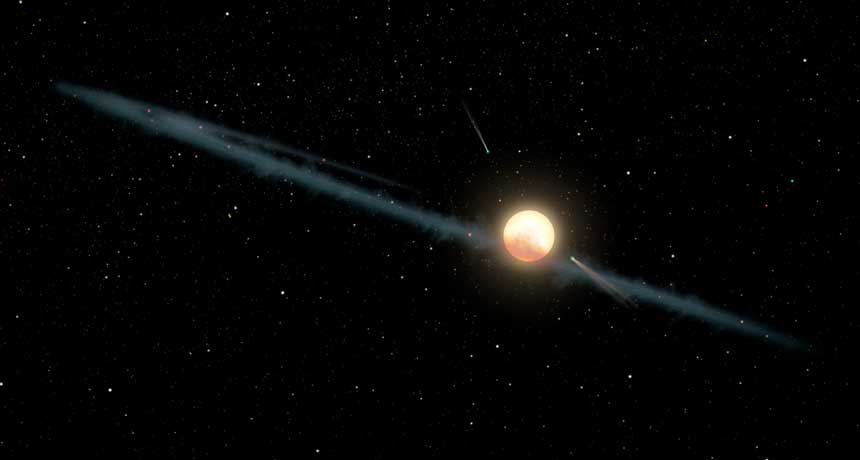Aliens ruled out for why Tabby’s star flickers
Puzzle over where light-dimming dust comes from still remains

DUST IN THE WIND Dust surrounding KIC 8462852 (known as Tabby’s star), shown in this artist’s illustration, could explain the star’s odd dips in light. But scientists don’t know where the dust came from.
JPL-Caltech/NASA







